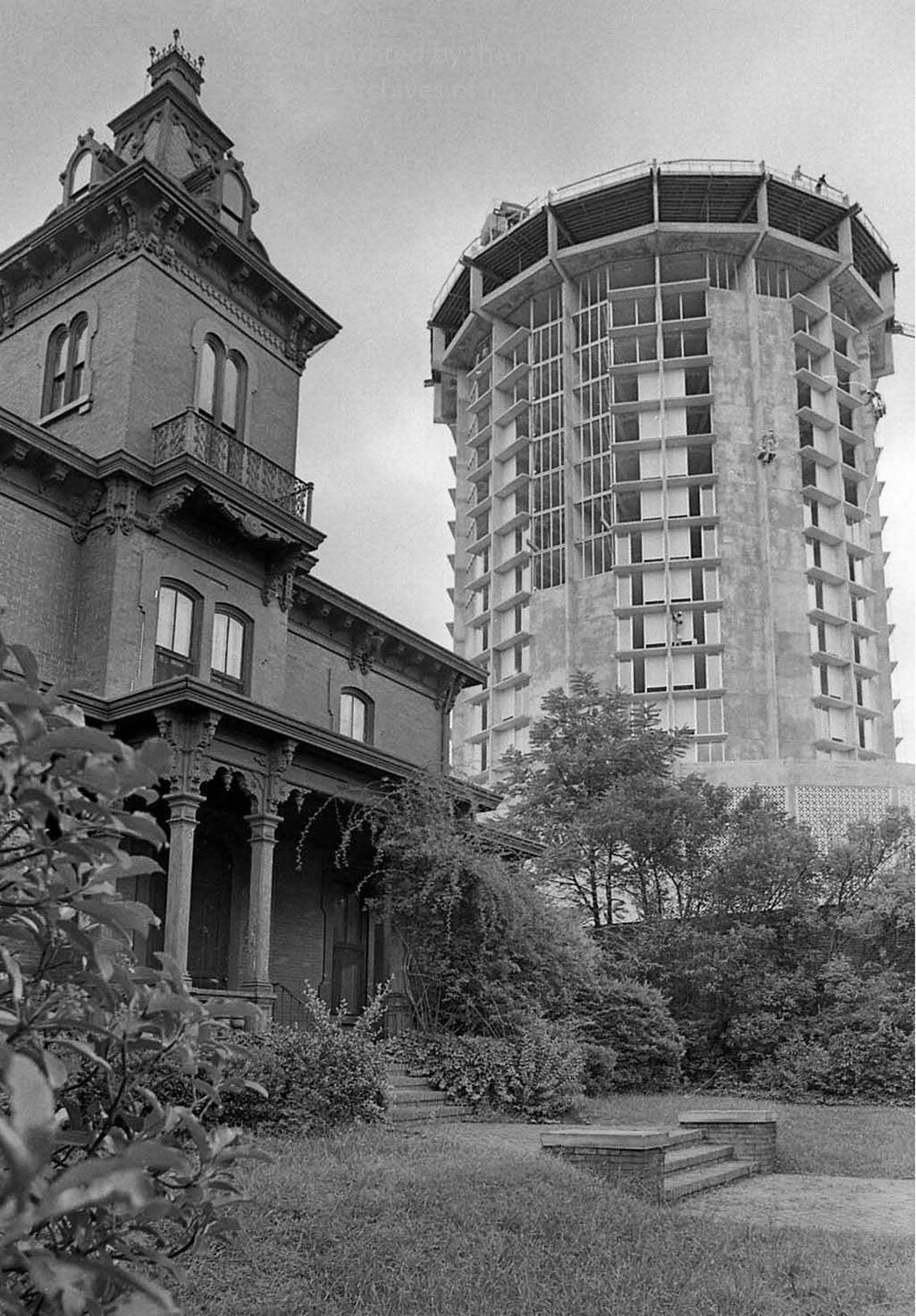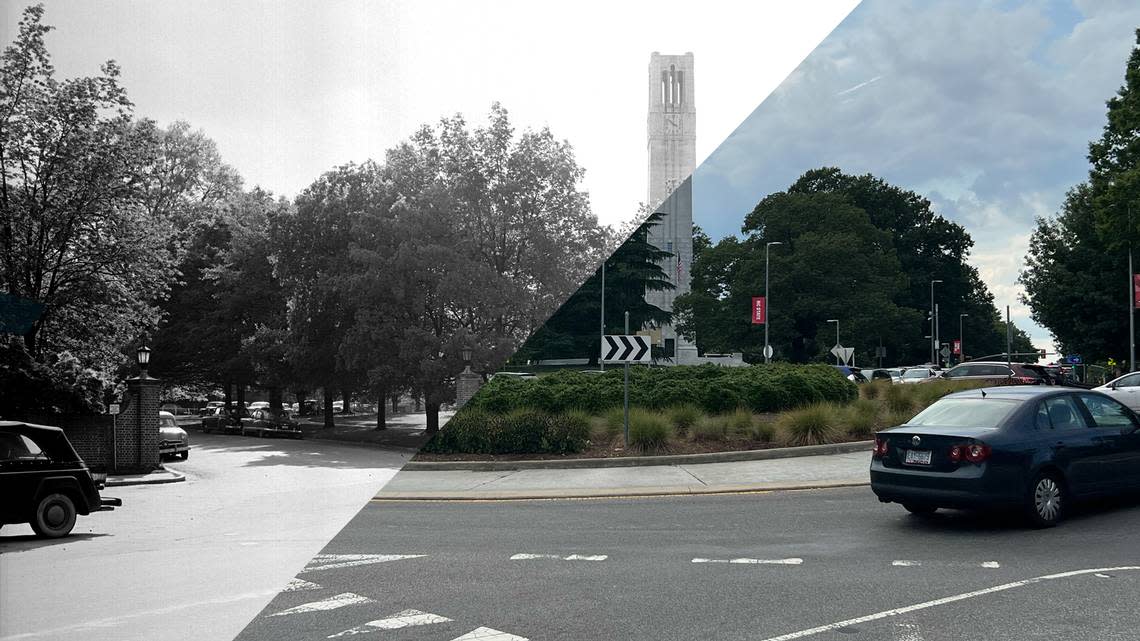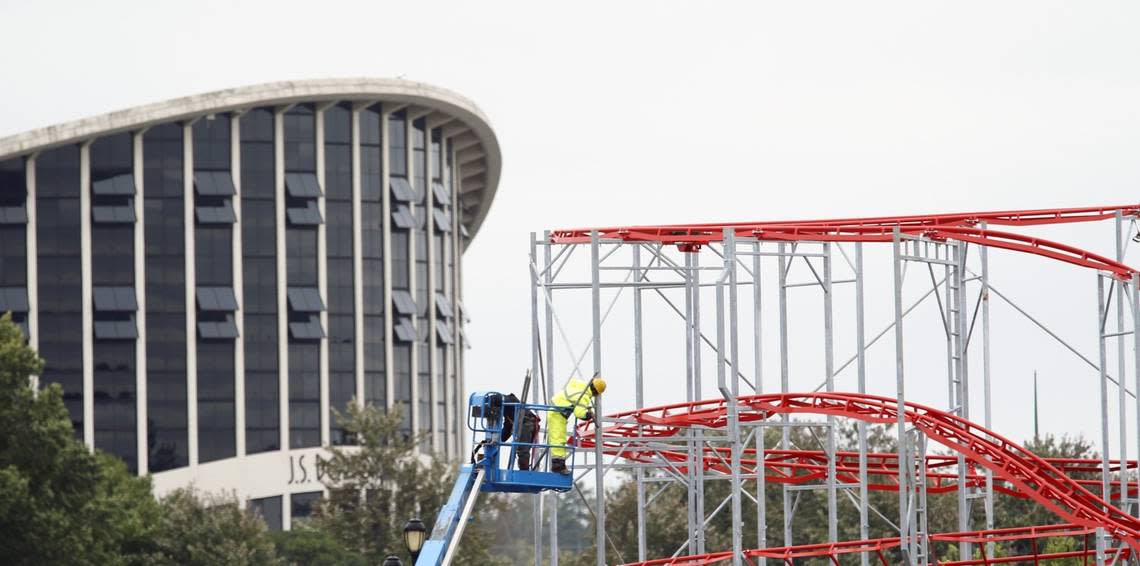Think of Raleigh’s iconic Hillsborough Street as a public amenity
Editor’s note: The writer is a member of Raleigh’s Appearance Commission, which advises the city on design issues. The N&O’s recent series on iconic Hillsborough Street prompted him to write this.
More Raleigh icons lost to high-rises on Hillsborough Street. What’s to become of Char Grill? Snoopy’s. What’s to become of Hillsborough Street?
Raleigh is favored as much by its scarcity of ugly, chaotic streets, as by the beauty of its parks, open spaces, greenways. The Western Boulevard corridor, New Bern Avenue, Wilmington Street, South Saunders Street and soon, Capital Boulevard, surprise the visitor with their personality, appearance. Not to be ignored: Hillsborough Street. Irregular and uncertain, it’s six streets in one.
Beginning at the Capitol, Hillsborough Street is formal — a grand, tree-lined boulevard of classical proportions. Even its soon-to-be-demolished hexagonal hotel is ceremonious in its own, eccentric way.

Then, crossing the railroad tracks near Glenwood Avenue, two blocks are fast succumbing to office high-rises, yet on the north side still exists a remnant of a hectic, 1950s automobile-centric segment, including a shuttered service station, drive-in restaurants, Char-Grill, and a ghost of Snoopy’s hot dog stand — local classics that were drawing customers long before anyone ever dreamed of neighboring Glenwood South as a dining destination.
On to St. Mary’s campus and to vintage garden apartments opposite, which together offer a parkway-like calm as the street turns in a broad curve, rising and sweeping out of a grid and gliding into a slightly irregular pattern. This, essentially residential segment, confirms that Raleigh is the City of Oaks, or at least, of foliage in general.
Just beyond, between Morgan and Pullen-Oberlin, is a near-forgotten contributor to the street’s variety — a fragment of the city’s early 20th century streetcar suburb. A commercial building of the period and a dozen residences of the period are followed by a church, the YMCA, a dormitory, a hotel (soon to be replaced with a dormitory) and a boarding house. They’re all book-ended at Oberlin Road by a museum (1928) and another early commercial building and a church (1923).
In between the more recent construction is set back 20-feet in imitation of earlier residential front yards — all orderly and open with small-scale/large scale contrasts, leaving room for a sense of nature and openness.

Next: the NC State University Bell Tower introduces the street as a path through arts, culture, recreation and higher education: the NCSU/Meredith College corridor. This is where funky-town meets up-scale mid-rise residential along the groves of academia with tree-canopied pedestrian walkways and campus front lawn, encompassed by a greenway.
Finally, I-440 looms and a railroad joins the street. Together, they race through a semi-pastoral countryside, past NCSU’s faculty club and vet school, towards the Mediterranean revival style fairgrounds arcade and the city’s other architectural icon, Dorton Arena.

Like every important and valued street, Hillsborough Street has resisted a numbing sameness, fashioning instead a series of discrete spaces, woven within multiple-uses and unfolding natural perspectives, proportions and relationships.
Will its energetic compositions of appealing diversity be completely replaced by high-rise insensibility? Is banality just around the corner?
Amplification of the street’s legacy can rescue it. Its green framework foundation can announce the street as a public amenity and a valued aesthetic contributor.
Design interventions can guide adaptation:
▪ infrastructure and incentives to serve and encourage, not disrupt, desirable features;
▪ street trees and landscaped medians;
▪ and placemakers to help discover and preserve its quirky icons.
Think parkway, allée, and strollway.
City streets are not simply thoroughfares for motor vehicles, but are part of the commons — a public good and a public space where people shop, meet and generally participate in the activities that make urban living enjoyable.
Like its parks and greenways, Raleigh streets can be green spaces too — often in places you wouldn’t expect.
Douglas Johnston lives in Raleigh.
